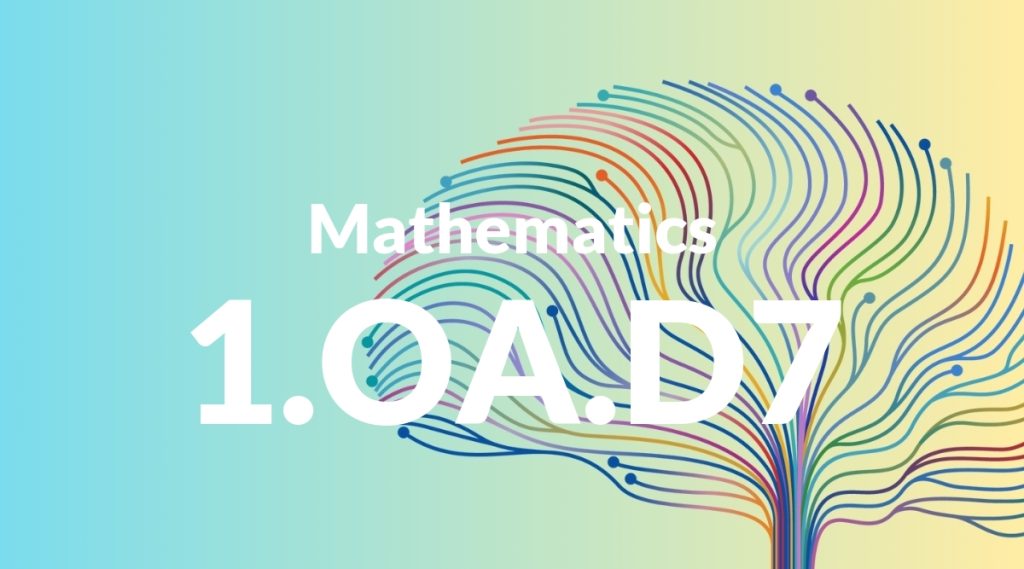Standard: 1.OA.D7 – Understand the meaning of the equal sign, and determine if equations involving addition and subtraction are true or false. For example, which of the following equations are true and which are false? 6 = 6, 7 = 8 – 1, 5 + 2 = 2 + 5, 4 + 1 = 5 + 2.
Grade level: Grade 1
Subject: Mathematics
Domain: Operations & Algebraic Thinking
Teacher Overview
This standard aims to help students understand the concept of equality in mathematical equations. It is crucial for developing a foundational understanding of algebraic thinking and arithmetic operations. Students should be comfortable with basic addition and subtraction and recognize simple number sentences.
After mastering this standard, students will be able to solve more complex equations and inequalities, and understand the properties of operations.
Common Misconception 1
Some students may think the equal sign means ‘the answer is next’, which is incorrect because the equal sign actually indicates that the values on both sides are the same.
Intervention 1
Engage students in activities where they use a number balance to see that the equal sign means balance or equivalence, not just the result of a calculation.
Common Misconception 2
Another common misconception is that the order of numbers in an equation doesn’t matter, which can lead to incorrect conclusions about equality.
Intervention 2
Utilize visual aids like balance scales to show that changing the order of numbers can affect whether the equation is true or false.
Prerequisite Knowledge
Students should have a basic understanding of addition and subtraction, and be familiar with simple number sentences.
Subsequent Knowledge
Students will develop the ability to solve more complex equations and inequalities, and understand the properties of operations.
Instructional Activities
- Use number balances to visually demonstrate equality.
- Create matching games where students pair true and false equations.
- Incorporate story problems that involve checking if two quantities are equal.




